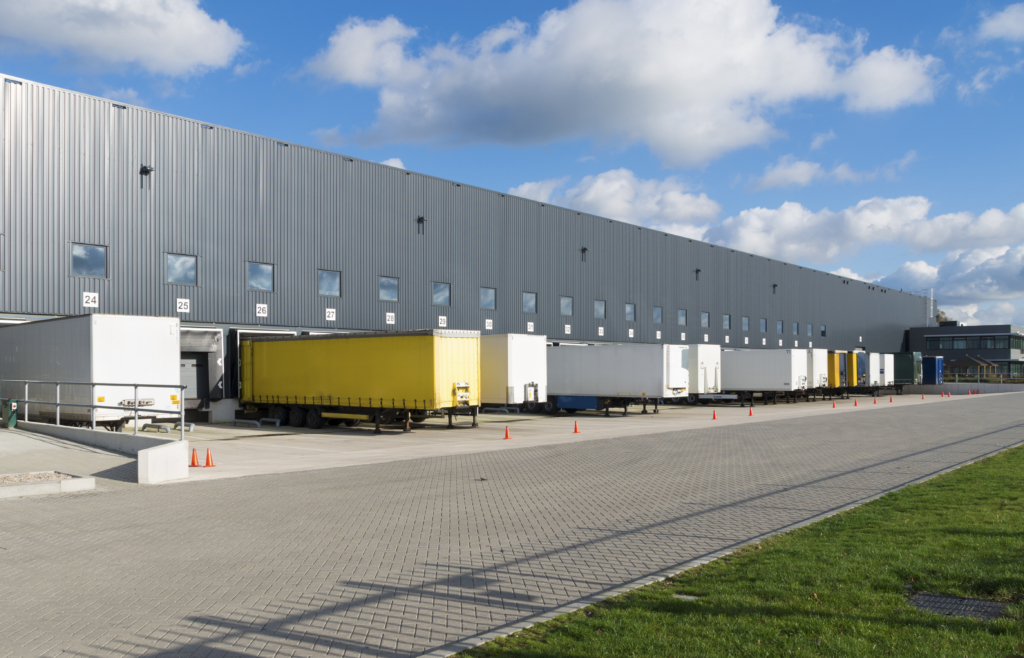A heated debate in Harford County about a proposed 5.2 million sf industrial development has brought a new policy question to the forefront: Have large, modern warehouses evolved beyond a reasonable definition for light industrial?
For well over a year now, Chesapeake Real Estate Group (CREG) has been dealing with fierce public opposition to its proposed 700-acre development on the Perryman Peninsula. Part of the Havre de Grace Aberdeen Enterprise Zone, the site was zoned for light industrial (LI) in 1997. Both the enterprise and LI zoning have been reviewed and reauthorized multiple times since then, and the peninsula has become the site of approximately 12 million sf of warehouse space, including facilities for XPO Logistics, Sephora, Electrolux, Bob’s Discount Furniture, the Container Store and Wayfair. It also contains a power plant, two waste water treatment plants, a rail line and an Army base.
Matt Laraway, Executive Vice President and Partner, said CREG’s objective from the beginning was to create a concept plan that is consistent with existing development, required no variances and included additional measures to mitigate noise, traffic and environmental concerns. Their development would not impact wetlands and requires clearing on less than 1 percent of the site. (The site is currently open fields.) The project was designed to deliver 150 percent of stormwater management requirements, exceed county requirements to protect wellheads from contamination and include 200-foot setbacks (instead of the required 30-40 feet).
CREG conducted multiple traffic studies (using both Harford County’s traffic standards and the international traffic standards for ITE High Cube Warehouse Non-sort classification), proposed several road improvements as part of the development and has entered into a Memorandum of Understanding (MOU) with Harford County for the construction of a road that provides a second means of egress and enables peninsula residents to bypass the industrial park as they drove to and from their homes.
“It would be disingenuous of me to say that life on the Peninsula isn’t going to change at all. But we have listened and worked hard to mitigate every impact as much as possible. There are many things we did in the plan that are well above and beyond what is required,” Laraway said, noting the project has received over 90 percent of county approvals. “Still, people kept saying, just kill the project.”
In a lawsuit aiming to block the development, a residents’ organization called the Protect Perryman Peninsula Coalition argued that the project would bring 1,811 trailers and 3,829 vehicles to the peninsula, creating a “freight terminal” and violating county zoning.
“We are not building a freight terminal, we are proposing five warehouse/distribution buildings. Freight terminals as defined, require multi-modal access (including rail) as well as door counts, building depths and parking ratios that are significantly different from what we are proposing to build. We are proposing to build the same type of buildings that were built across the railroad tracks in the same LI zone the most recent being Wayfair which delivered last year,” Laraway said.
County Executive Bob Cassilly, however, stepped into the middle of the debate in February and proposed a six-month moratorium on new permits for warehouses or distribution centers in order to study the impact of and appropriate zoning for large, modern warehouses. County council passed a similar moratorium last year, but the legislation was vetoed by the previous county executive and was cited as being illegal.
In a statement provided to NAIOP Maryland in March, the County Executive’s office said, “County Executive Cassilly recognizes that the nature and impacts of today’s warehousing and distribution facilities are significantly greater than what could have been anticipated at the time when warehousing and processing facilities were originally inserted into the Zoning Code as permitted uses. When our zoning code was created in 1982, these facilities did not exist nor were they anticipated… Mega warehouse and distribution centers pose unique challenges that are being experienced across our region, especially along the I-95 corridor.”
If Harford County Council approves the moratorium, the county will conduct “a comprehensive review of the impacts to the community, economy, and natural environment surrounding where these facilities are located. At the end of the six-month period or sooner, the Administration may propose changes to the Zoning Code that address the appropriate location of warehousing facilities and impacts on the quality of life in surrounding communities,” the statement said.
Bill Pellington, Executive Vice President of CBRE Advisory & Transaction Services, Industrial & Logistics, has brokered industrial deals in the region for 30 years. He calls the participation of county politicians in the industrial development dispute “troubling and shortsighted… We are seeing a tremendous amount of government intervention on projects that are properly and legally zoned.”
That intervention, he added, could ultimately impact more than the CREG project and another warehouse development, Abingdon Woods, that has also met with public opposition.
“People think it is only impacting the projects that are on the table right now,” Pellington said. “But there are many other companies who are presently located in Harford County with intentions to expand existing operations there. If these companies are not able to pursue expansion opportunities within this submarket, they will be forced to pursue expansion opportunities in other jurisdictions or even other states.”
Ultimately, that could undermine the county’s longstanding effort to “expand its tax base and create well-paying jobs locally.” he added.
CREG has already heard from some would-be industrial tenants of different types that “they don’t know if they want to consider Harford County as an option because they don’t want to get partway through a permitting process and have the government change the rules that have been long established. What is most important to corporate occupiers of space is transparency and predictability,” Laraway said.
